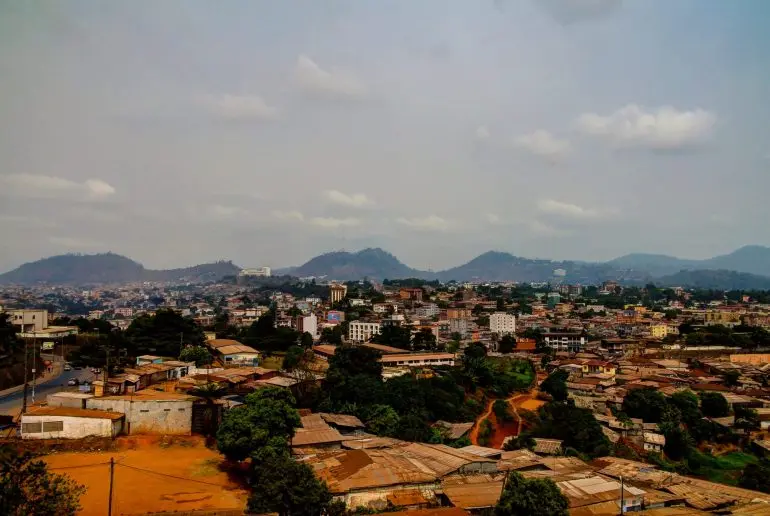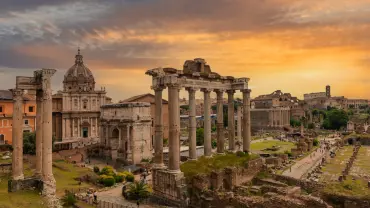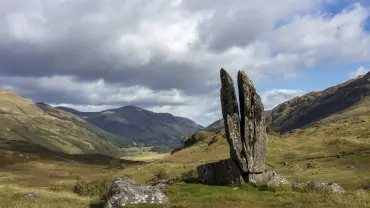One night in August 1986, nearly every living being in the vicinity of Cameroon’s Lake Nyos was killed almost instantly. A combination of myth, conspiracy and scientific fact surrounded the Lake Nyos deaths in the immediate aftermath. These desperate attempts to make sense of the tragedy have since been superseded by international efforts to ensure it doesn’t happen again.
Lake Nyos Disaster

Cameroon map (dk_photos via iStock)
On a normal market day on 21 August 1986, an extraordinary disaster instantly killed almost everything and everyone living within a 15-mile radius of Lake Nyos, Cameroon.
An estimated 1700 people and 3000 animals were found wherever they would normally have been at 9:30pm, the time the tragedy is thought to have happened. For many, that was asleep in bed.
Of the few people who survived, they noted that no flies surrounded the bodies. The insects had also perished. Of all the living things, only the plants had been spared. Survivors also reported briefly hearing rumbling from the small lake that evening before seeing a cloud disperse with a terrible stench.
Cameroon Lake deaths: The Search For Answers

Lake Nyos is a crater lake in the Northwest Region of Cameroon (Photo: Leonor Erea via iStock)
So what caused the Lake Nyos disaster? Certainly there were plenty of myths surrounding the body of water offering explanations. Local lore warned that the lake was dangerous, in accordance with which some groups only built their homes on elevated land. This has since been posited to be a sort of geomythology, and has allowed stories from real geological events to take on a mythical aspect over time.
In the immediate aftermath, there were no answers. Initial suggestions of a volcanic eruption were quickly dismissed. But scientists from around the world were determined to provide an explanation. They rushed to the Cameroonian capital, Yaoundé, then undertook the 12-hour drive northwest to Lake Nyos.
A Previous Disaster

Aerial cityscape view of Yaounde, the capital of Cameroon (Photo: HomoCosmicos via iStock)
The Lake Nyos disaster was not the first instance of Cameroon lake deaths of this kind.
A strikingly similar event had taken place two years before. On 15 August 1984, a mere 60-miles away from Nyos, 37 people died after an explosion at Lake Monoun. Myths, political intrigue and a volcanic eruption under the lake swirled around as attempted explanations, but no conclusion was reached.
One volcanologist however, did discover a vital clue. That the lake waters at Monoun were saturated with Carbon Monoxide (CO2).
Gas clouds from Lake Nyos

Mist over a lake (Photo: heinstirred via iStock)
Over the weeks and months following the Lake Nyos tragedy, scientists developed a working theory. This was that deadly gas clouds from the lake had caused the disaster. Such events are known as limnic eruptions.
The gas in question at Lake Nyos was CO2. Colourless and odourless, this gas is instantly lethal when it makes up 30% of the air or more. Scientists determined that geological processes from volcanic activity beneath the crater lake had produced this CO2. Rather than dispersing over time as it would in most other lakes, the heavy gas must have been trapped at the bottom of Lake Nyos by the water above. It is believed that a combination of factors exacerbated matters, including Lake Nyos’ exceptional depth and the area’s usually hot climate. This would have prevented the gas from releasing, instead building up over time.
It is thought that, on 21 August, something upset the lake’s delicate balance and forced the CO2 to the surface. Going by the noise reported by locals, and examinations of nearby cliffs, this was most likely a rockslide causing large objects to disturb the water. Or perhaps a sudden temperature drop cooled the surface water and made it sink, thus allowing the gas to rise.
Assuming this theory holds true, once the gas was released from the lake it would have proved deadly to any living thing in the vicinity, leading to the tragedy that took place at Lake Nyos.
Preventing Future Disaster
In the 1990s, scientists experimented with using pipes to release gases under both Lakes Nyos and Monoun. This meant sinking pipes to the lakebed and then linking them to the surface, to allow the CO2 and other gases to escape over time. With these tests proving successful, in 2001, scientists began degassing Lake Nyos. In 2020, a report in the Journal of African Earth Sciences declared the project a success.
A Rare and Tragic Event
Following the tragic Cameroon Lake deaths, the scientific community came together to prevent such a disaster from happening again. While lakes with similar conditions to Nyos and Monoun are rare, they do exist. East Africa’s vast Lake Kivu is a particularly potent example. A novel approach has been taken to the methane gas under Kivu, with it being removed and used as an electricity source.












